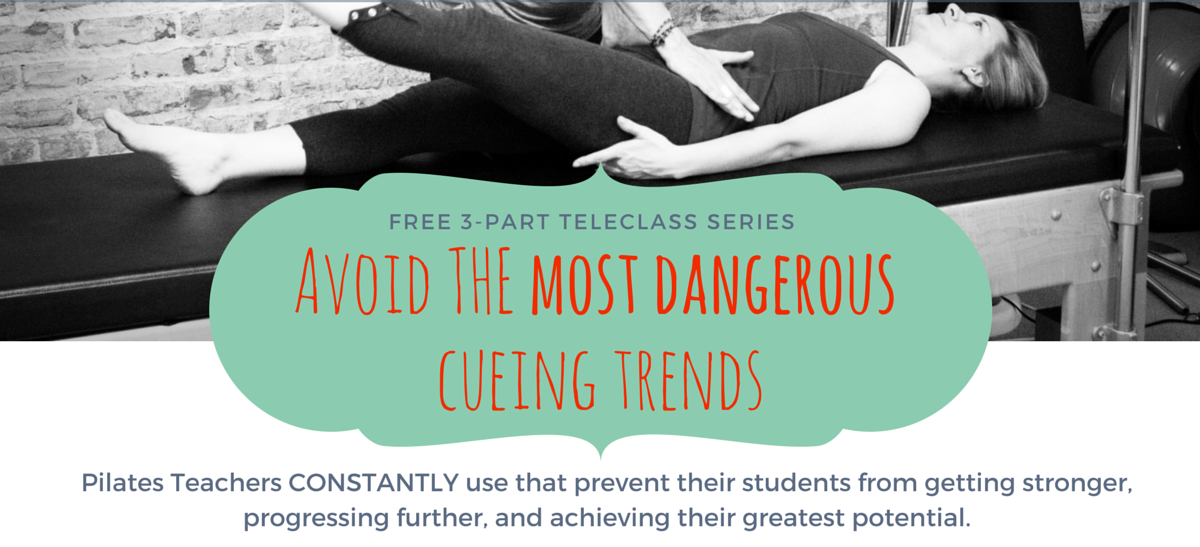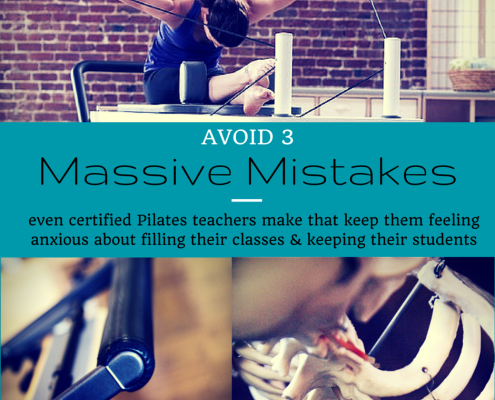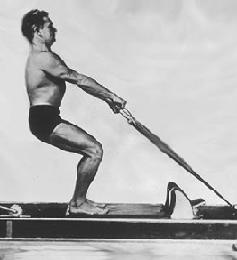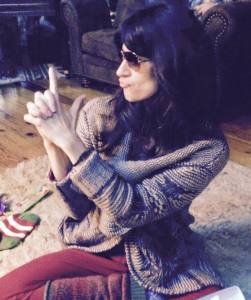The 4 Most Pivotal Teaching Tools For Enhancing Motivation in our Pilates Students and Ourselves
Here we are at long last, the next article in the series on leading our students toward greater, sustained MOTIVATION.
In February I posted the first article: “Number One Reason Pilates Students Don’t Stay Motivated & What We Can Do About It TODAY!”
If you want to know more about how EXPECTATIONS are likely thwarting you and your students and causing a serious lack of internal motivation, you will want to read the first article. Go there now.
I also explain the value of and how to extrapolate intentions – the first key concept – but want to say a few more things about intentions before we move on to the next three concepts.
Here’s the premise I presented in article 1:
When we are aware of the power of unacknowledged and unrealistic expectations we open ourselves up to understanding the four key concepts that will lead us to cultivating and supporting greater, sustained motivation in our students (and ourselves).
4 Key Concepts
Intention: Setting a foundation for starting over (empathy)
Core Commitments: Being versus doing (values)
Discrepancy: Realistic assessment of progress (perception)
Self-efficacy: Proof of success (experience)
Unhelpful expectations, or expectations that we are unconscious of, create a fundamental block for all of us in everything we do.
When unmet they spin us out into stories of guilt, failure, being the kind of person who can’t live up to what they say they are going to do.
This is exactly what happens for our students every time they don’t live up to the expectations they have set for themselves or those they believe have been set by someone else. In this case perhaps a higher Pilates power that dictates what and how they should progress. (Be aware of if you are actually channeling this higher power and not aware of it.) Without a clear intention these stories will VERY LIKELY depress motivation.
Intentions Continued
Setting a foundation for starting over (empathy)
The reality is that some of us are better at mitigating the stories and self-talk that come along with not meeting expectations. Some of us can sustain a level of motivation for a few a little while, exercise self-forgiveness and compassion, and some of us will stop all action at the first sign of “perceived” failure. Often the primary difference between motivational ebb and sustenance is intention.
After we have taken some time to identify the expectations that are guiding us, which ones are helpful or not (read the previous article on the subject here) then we have to get clear about HOW we meet our expectations and our goals – or any moment really.
We discussed intentions at some length in the previous article, but I thought it would be helpful to take a moment to expand briefly on the topic before diving in to Core Commitments.
For clarity’s sake let’s breakdown our students efforts or practice this way:
- A goal (that’s the thing we want to achieve)
- An expectation with regard to that goal (that’s the story or belief that we will or will not reach the goal)
- An intention (how we show up to achieve the goal and meet the expectation.)
Intentions, Empathy & Starting Over
For the purposes of helping our students achieve greater motivation we will say that intention is what holds the goal and the expectation; it is the desire to be a certain way not necessarily create or achieve a specific thing.
Part of what we do as teachers is lead and we lead not only by example but by helping our students see to the heart of their own desires, which in turn stimulates a much deeper sense of internal motivation and a willingness to keep showing up even when things don’t go as planned (which is often!).
Being able to help our students, directly or indirectly, identify the intention that is behind each goal the more likely we are to be able to keep them on the path to practicing and gaining ground. This is also an expression of empathy on our part as the coach, leader, and guide. With a wisely held intention we can both be empathetic and help the student to extend self-empathy.
We do that by having regular conversations with our students to discover what is most important to them in reaching their goals and then reflect back to them that even if they don’t reach their goals in the time or manner expected that they can continue in a dedicated and steadfast way lead by their intentions.
Core Commitments
Being versus doing (values)
If you haven’t heard me talk about core commitments yet I’d be super surprised. It’s a tool that is at the very heart of Skillful Teaching because in my experience core commitments are absolutely essential to our long term, sustainable success as teachers.
For our purposes, however, I want to talk about how we can help our students identify what’s most important to them internally, personally, even emotionally and psychologically, so that motivation is sustainable no matter what the external circumstances.
Sally Kempton – yoga and mindfulness teacher and core commitments originator – writes that your core commitments “can withstand any amount of chaos and remain in place even when your external commitments are dissolving around you.”
Core commitments are a reflection of our deepest values. Anchoring into them means that our motivation is powered by something much more powerful than external results.
Here are examples of a core commitment that your students can connect to for themselves:
- Honesty
- Generosity
- Kindness
- Self-improvement
- Compassion
- Being of service (to family or the world)
- Health
- Nature
When translating core commitments into a relevant strategy for motivation, I like to frame them like this:
“I’m the kind of person who…”
This makes the core commitment incredibly REAL, PRACTICAL, and USEABLE, which of course is very important for us in order to apply them to our work with our students.
Here are some examples of how these core commitments can become a deeply rooted internal motivator for our students:
CC = Honesty
“I’m the kind of person who is always honest with myself and can knows the truth is that my life is better when I feel strong and am pain free.”
CC = Generosity
“I’m the kind of person who is not only generous to others, but am also always generous to myself. My Pilates practice is a generous gift to my health and well being.”
CC = Being of service
“I’m the kind of person who is able to be depended on by my family and friends. Staying healthy and strong means that I have the energy and vitality to be called on when ever there is a need.
It can be much simpler than that too, depending on the student. For me, I’m committed to being a good example to my kids to my statements run the gamut.
I’m the kind of person who doesn’t get angry easily.
I’m the kind of person who puts my shoes away every time I walk in the door
I’m the kind of person who sits down to do one thing at a time, not 2 or 3.
I’m the kind of person who likes to laugh.
How do we get our students to do this?
Remember this is the Psychology of Teaching, so it wouldn’t be surprising if some of this is uncomfortable for you. Nor would it be surprising if you were sitting there reading this wondering how the hell do I put this in to my teaching!
The truth is maybe you won’t. But there is tremendous benefit to knowing and understanding these concepts and being able to apply them to YOURSELF. Everything we do to improve ourselves or better understand our role as teacher AUTOMATICALLY infuses our teaching. I’m sure most of you can attest to that.
However, if you are interested in some suggestions as to how this material might play out in your teaching, here are some thoughts:
- Add a question or two into your intake. For example:
- What are you most committed to in your life? (you could give relevant examples)
- Besides your “goals” what is the primary motivation for choosing Pilates?
- How do you believe Pilates will improve your life?
- Are you the kind of person who believes being strong and healthy helps you: (offer choices)
- be better at your job
- be a better friend, parent, family member
- live the life you want
- be your best self
- live a more productive life
- etc…
- Look at what they answered and repeat it back to them. Ask them if it’s true and if they could use it as a way to stay motivated. Consider how you could work the answer or answers in regularly.
- For instance if you give your students homework, perhaps at the top of their homework sheet you write:
- My goals are:
- My intention for my practice is:
- I am the kind of person who:
- For instance if you give your students homework, perhaps at the top of their homework sheet you write:
I have no doubt that you will be able to find ways that feel authentic to you to integrate this work. Don’t rush it or force it. See how and if it starts to show up now that you are aware of it.
Often all you have to do is change your language to fit the language that your students use.
Let me clarify: AVOID negative language; PROMOTE OR UTILIZE positive language or phrases.
I think I’m going to let us pause for a moment here, let you digest and see how this fits for you. If however you want to move right on to explore Discrepancy: Realistic assessment of progress (perception) & Self-efficacy: Proof of success (experience) then click this link.
P.S. Check out this free educational series.





 How are you showing up? Why are you showing up? Why do you teach? What IS teaching? Why do you care? This is Skillful Teaching: A Whole-person approach to being an expert teacher, not an expert technician. There's a difference. Want to know what it is?
How are you showing up? Why are you showing up? Why do you teach? What IS teaching? Why do you care? This is Skillful Teaching: A Whole-person approach to being an expert teacher, not an expert technician. There's a difference. Want to know what it is?